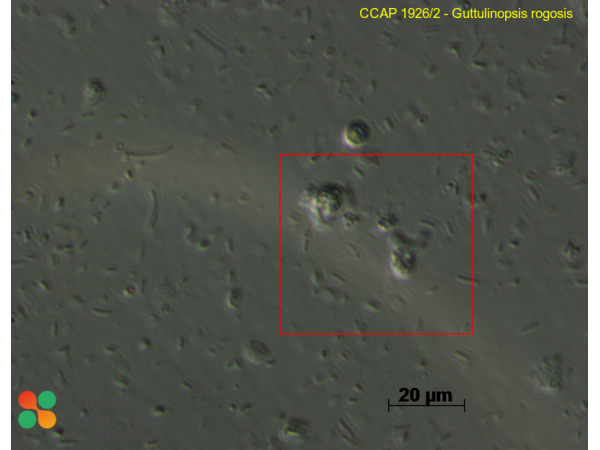References [ 1 ]
Schuler GA, Tice AK, Pearce RA, Foreman E, Stone J, Gammill S, Willson JD, Reading C, Silberman JD & Brown MW (2018) Phylogeny and Classification of Novel Diversity in Sainouroidea (Cercozoa, Rhizaria) Sheds Light on a Highly Diverse and Divergent Clade Protist 169: 853-874.
Division/Phylum: Cercozoa
Note: for strains where we have DNA barcodes we can be reasonably confident of identity, however for those not yet sequenced we rely on morphology
and the original identification, usually made by the depositor. Although CCAP makes every effort to ensure the correct taxonomic identity of strains, we cannot guarantee
that a strain is correctly identified at the species, genus or class levels. On this basis users are responsible for confirming the identity of the strain(s) they receive
from us on arrival before starting experiments.
For strain taxonomy we generally use AlgaeBase for algae and
Adl et al. (2019) for protists.
| Attributes |
| Authority | Schuler, Tice & Brown 2018 |
| Isolator | Tice (2014) |
| Collection Site | Cow faeces (Bos taurus) near Fayetteville, Arkansas, USA |
| Notes |
Forms aggregative (sorocarpic) fruiting body on cow faeces. Clonal culture. Minimally inhabiting cow dung, turkey dung, and a human nasal cavity. Fruiting body morphology is atypical of the genus. Fruiting bodies found on cow dung are approximately 150 μm tall with a stalk characteristic of G. vulgaris, but the sorus is oval with vertical folds (compared to smooth sphere sorus characteristic of genus). Average length in locomotion 13.4 μm, average width in locomotion 8.8 μm, average nucleus diameter 2.5 μm, average nucleolus diameter 1.7 μm, and average cyst diameter of 7.6 μm. Fast growing with hyaline area at the anterior of the motile cell. Primarily a bacterivore. E.coli ATCC MG1655 |
| Axenicity Status |
Monoxenic |
| Area |
North America |
| Country |
USA |
| Environment |
Animal |
| GMO |
No |
| Group |
Protozoa |
| Latitude |
35 52' 4.48 N |
| Longitude |
94 12' 3.99 W |
| In Scope of Nagoya Protocol |
No |
| ABS Note |
Collected pre Nagoya Protocol. No known Nagoya Protocol restrictions for this strain. |
| Collection Date |
pre 15/07/2014 |
| Original Designation |
FoldedA |
| Pathogen |
Not pathogenic: Hazard Class 1 |
| Strain Maintenance Sheet |
|
| Toxin Producer |
Not Toxic / No Data |
| Type Culture |
Yes |
| Taxonomy WoRMS ID |
|


